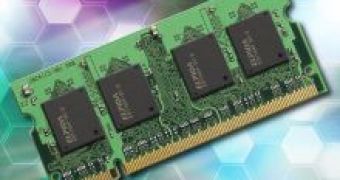When DDR1 appeared, it was running at 200/266MHz and officially ended at 400MHz with several manufacturers jumping over Jedec standards and offering sticks that could easily run at 600MHz. As for DDR2, the latest Jedec specs say it should run at 800MHz, but plenty of manufacturers offer chips capable of 1200MHz especially when overclocked/overvolted. Nvidia jumped directly into the DDR2-1200 boat with 680i chipset series and rumors say that the 1066MHz speed is close to become a new standard.
That may sound sweet for enthusiasts but keep in mind that no memory will do 1066MHz at default voltage (1.8V). To successfully run a 1066 setup, you need at least 2.1V and that translates into more heat and less life left in your sticks.
DDR3-1333 could resolve the problem as it runs at that default speed only fueled by 1.5V. But AM3 socket with K8L core is another nine months or so away. K8L will probably do DDR3-1600 speeds at the 1.5v stock voltage. That might take a while as Altair FX was already announced with DDR2 support at first.
Woodcrest/Clovertown cores could switch to DDR3 support - dual-channel DDR3-1333 can run synchronously with the dual 1333 FSB path that these CPU have. But for now, it seems that INTEL is sticking to DDR2 too.
There is, however, a problem when switching to a new DDR standard. Latency has worsened when manufacturers turned from DDR1 to DDR2 and it took some time before DDR2 surpassed the performance of DDR (DDR1 @ 400MHz CL2 performs about the same as DDR2 @ 667MHz CL4). DDR3 will come out first with CL6 making it a lousy performer at first but chip makers have already announced CL5 models. Let's just hope all this madness will result in a performance leap.

 14 DAY TRIAL //
14 DAY TRIAL //